The NHL is constantly changing.
From the difference in rules and regulations to the size of the athletes, hockey simply isn’t what it used to be when the league was formulated a century ago. One thing has remained the same, though; each generation has had its select players that have stood out amongst the rest.
Dating back to the 1920’s, we explored what the best possible starting lineup would look like based on the decade the players were born in. You’ll shortly see that they’re generally pretty even.
Rules
- Players were not necessarily given their natural position.
- All stats were found at QuantHockey and Hockey Reference.
1920’s
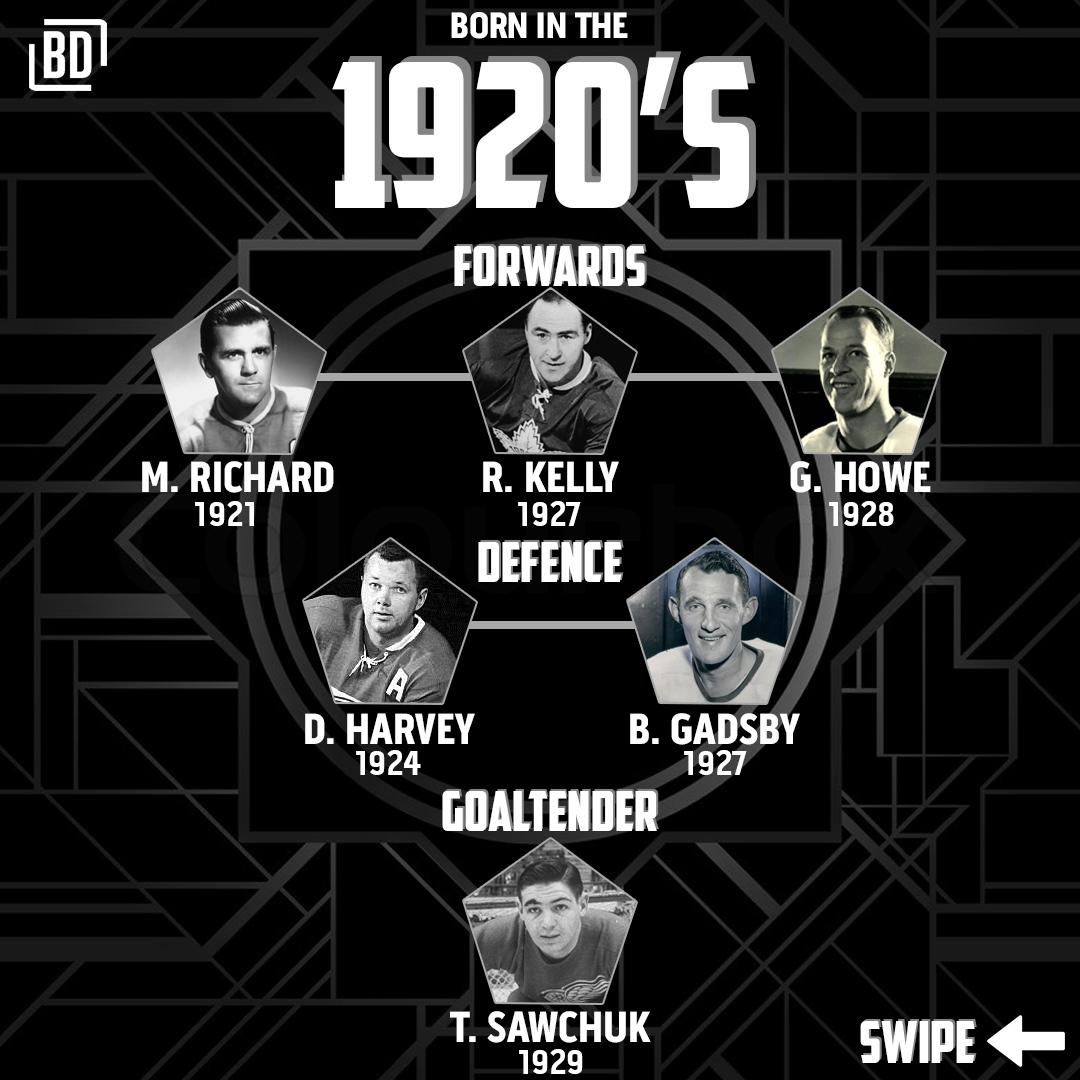
Arguably the greatest all-around player to lace up skates, Howe was a warrior in every sense of the word. The late Floral, Saskatchewan native is accompanied by his former Detroit Red Wings teammate and Toronto Maple Leafs legend Red Kelly and dynamic goal-scorer Maurice ‘Rocket’ Richard. On the blue line, legendary Canadiens defenceman Doug Harvey and former Chicago Blackhawks captain Bill Gadsby lead the way. The former went on to win seven Norris trophies while the latter was recently named one of the greatest players to never win a Stanley Cup by The Hockey News.
In goal, Terry Sawchuk is awarded the start over Hall of Famers Jaques Plante and Bill Durnam. Sawkchuk, a four-time Vezina Award winner and Stanley Cup champion, is one of just two goaltenders in NHL history to have recorded 100 shutouts throughout his career (103).
1930’s
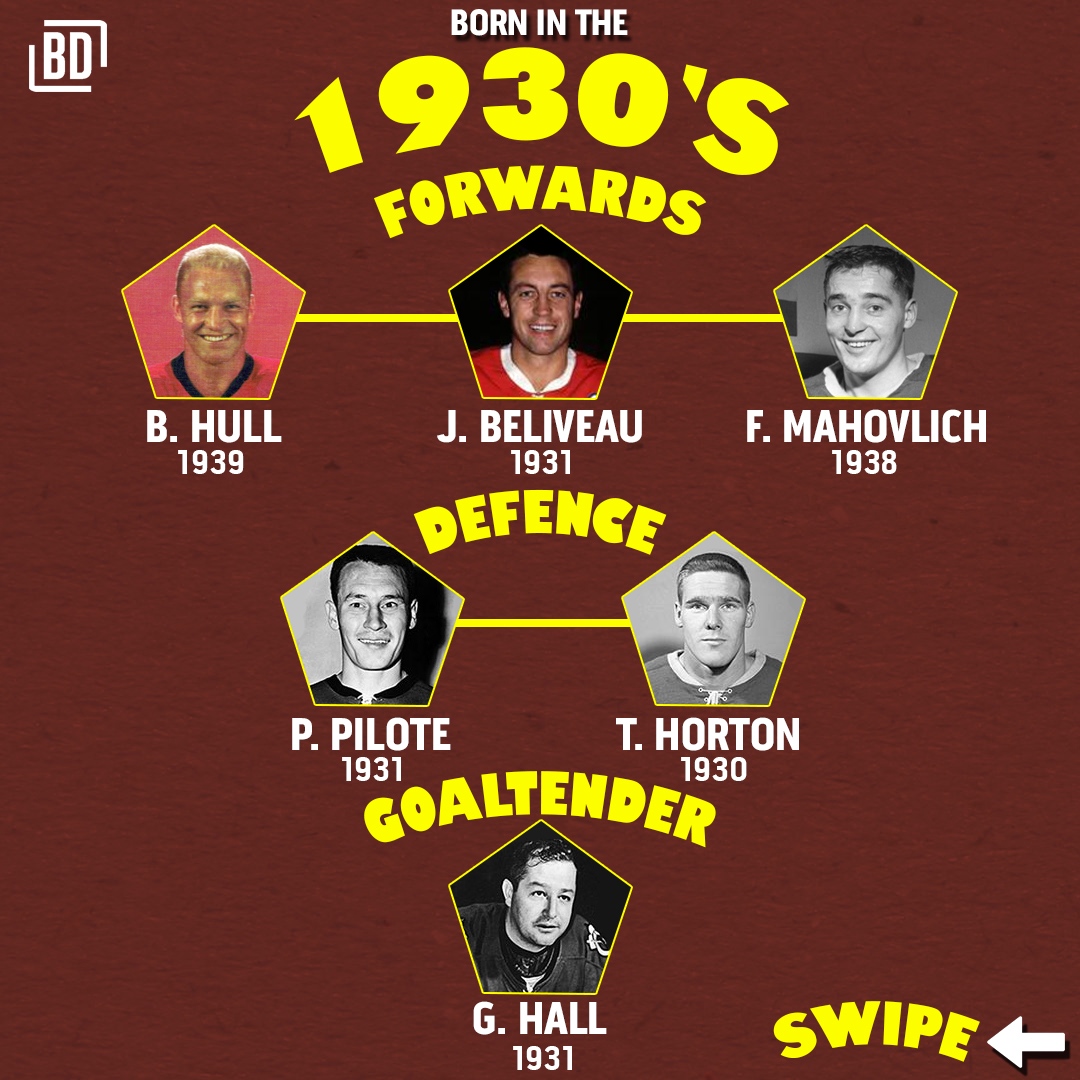
Two of the greatest forwards in NHL history help makeup an impressive line from the 1930's.
Jean Beliveau was the leader of his time, head-manning the Montreal Canadiens to 10 Stanley Cups during his 18 year career (55% of his seasons). In 1965, he became the first player to win the Conn Smyhte Trophy. Beliveau is joined by electrifying forward Bobby Hull and longtime Maple Leaf Frank Mahovlich. The three captured a combined 17 championships throughout their careers.
Tim Horton and Pierre Pilote deservingly get the call on defence. While Horton is primarily remembered for his fast food chain today, the former Leaf was a three-time First-Team All-Star and four-time Stanley Cup champion in the 60’s. His partner, Pilote, helped Hull capture the Blackhawks’ 1961 title over the Red Wings. He too was awarded three Norris trophies by the time he retired.
Glenn Hall gets the call in net after an illustrious 17-year career which saw hime win the Calder Trophy (1956), two Stanley Cups (1952, 1961), and the 1968 Conn Smythe Trophy. Hall is just one of five players in NHL history that was awarded the Conn Smythe without winning the Cup in the same year.
1940’s
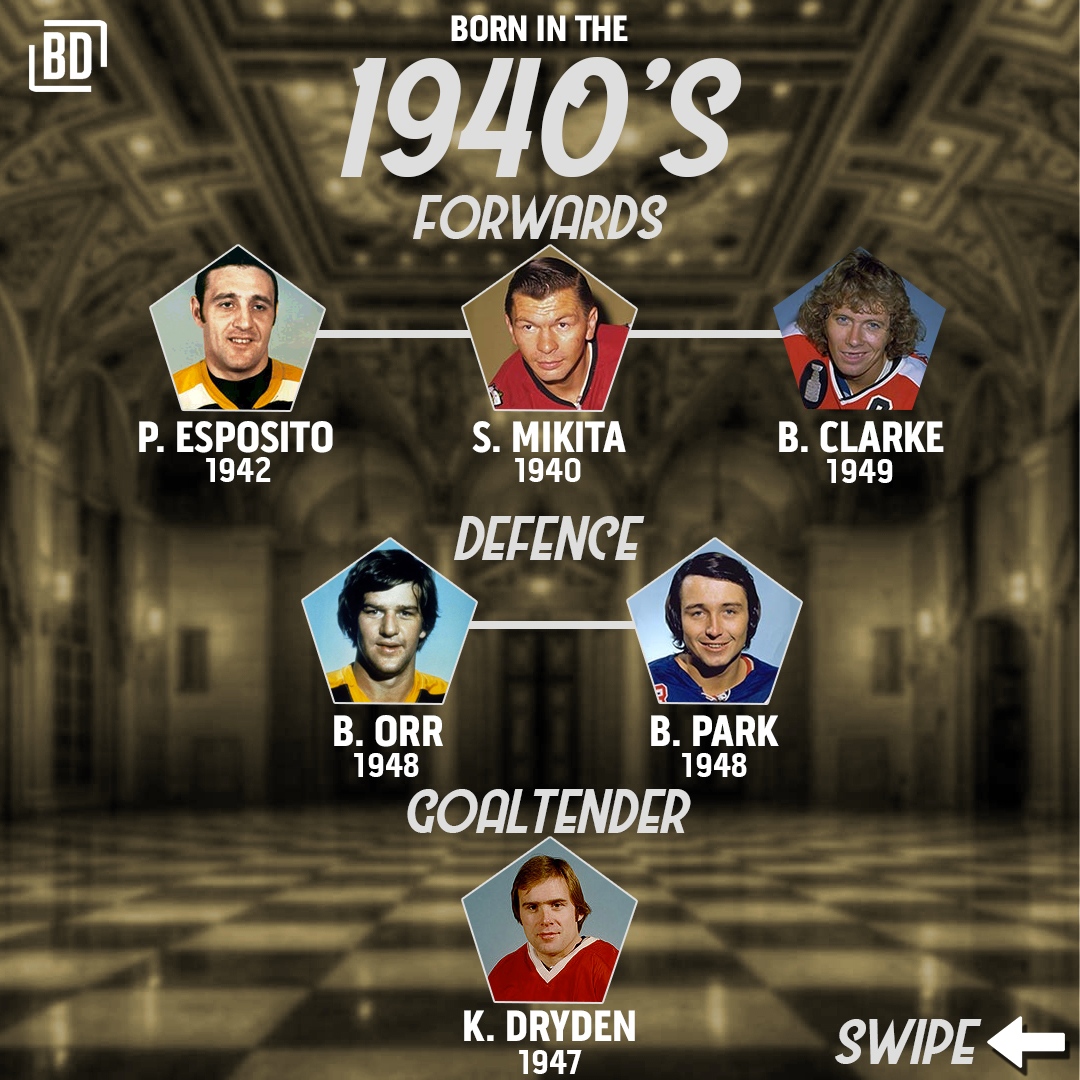
Named the greatest player in history by TSN’s The Reporters’ Steve Simmons, Orr could do it all. A smooth skater with offensive prowess, the two-time Stanley Cup champ’s career came to an unfortunate end due to a bad knee. Who knows what else he would have accomplished with more time? Orr is reunited with his brief teammate Brad Park, who failed to capture a Cup but made the playoffs every year of his 17-year career. Through 1,118 games, Park amassed 213 goals and 683 assists.
Phil Esposito, a player who ironically was apart of a deal which brought Park to the Bruins, is joined by Stan Mikita and Bobby Clarke on the 40’s’ starting line. The three were offensive juggernauts (combined for 4,267 points) and tough in their own regard.
Ken Dryden is the first Canadiens goalie to crack the list. After winning six Stanley Cups and five Vezina trophies with the team, he is a no brainer. Especially when you consider he only played from 1970-1979 with just seven seasons of 47 or more games played.
1950's
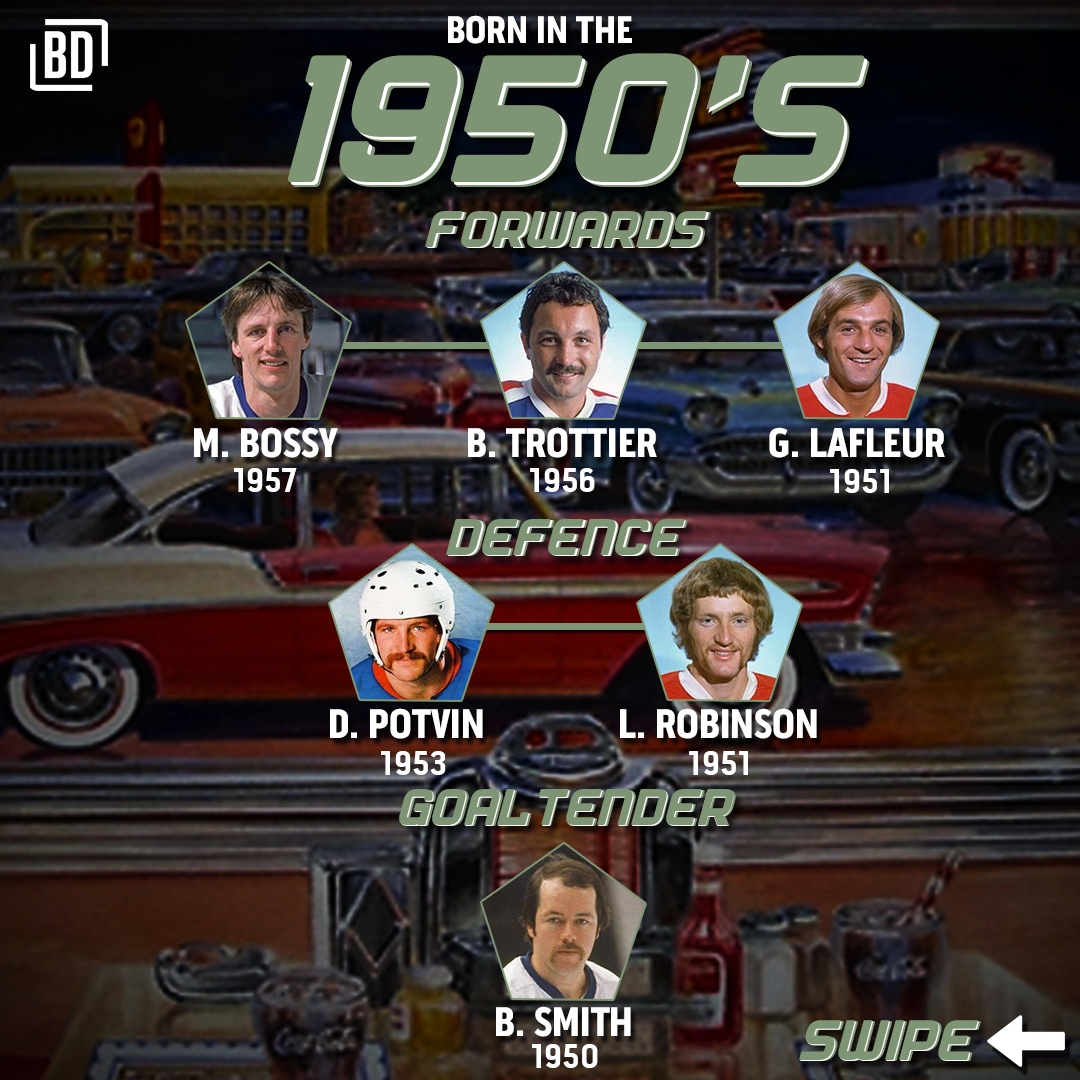
A group of Islanders are scattered throughout the 1950’s starting line.
Bossy, Trottier Potvin and Smith were the keys to New York’s four straight Stanley Cup championships from 1980-1984. Today, they are just one of two franchises in NHL history to capture four in a row. The other was the Montreal Canadiens, who were led by Guy Lafleur.
From the 1974-75-1979-80 seasons, Lafleur recorded 766 in 462 games, scoring at least 50 goals in each of those seasons. His longtime teammate, Larry Robinson, was a big skilled defenceman who desrves credit for his terrific play. They were the leaders on a stacked Canadiens dynasty.
It’s no wonder these two teams were so dominant between 1976-1984.
1960's
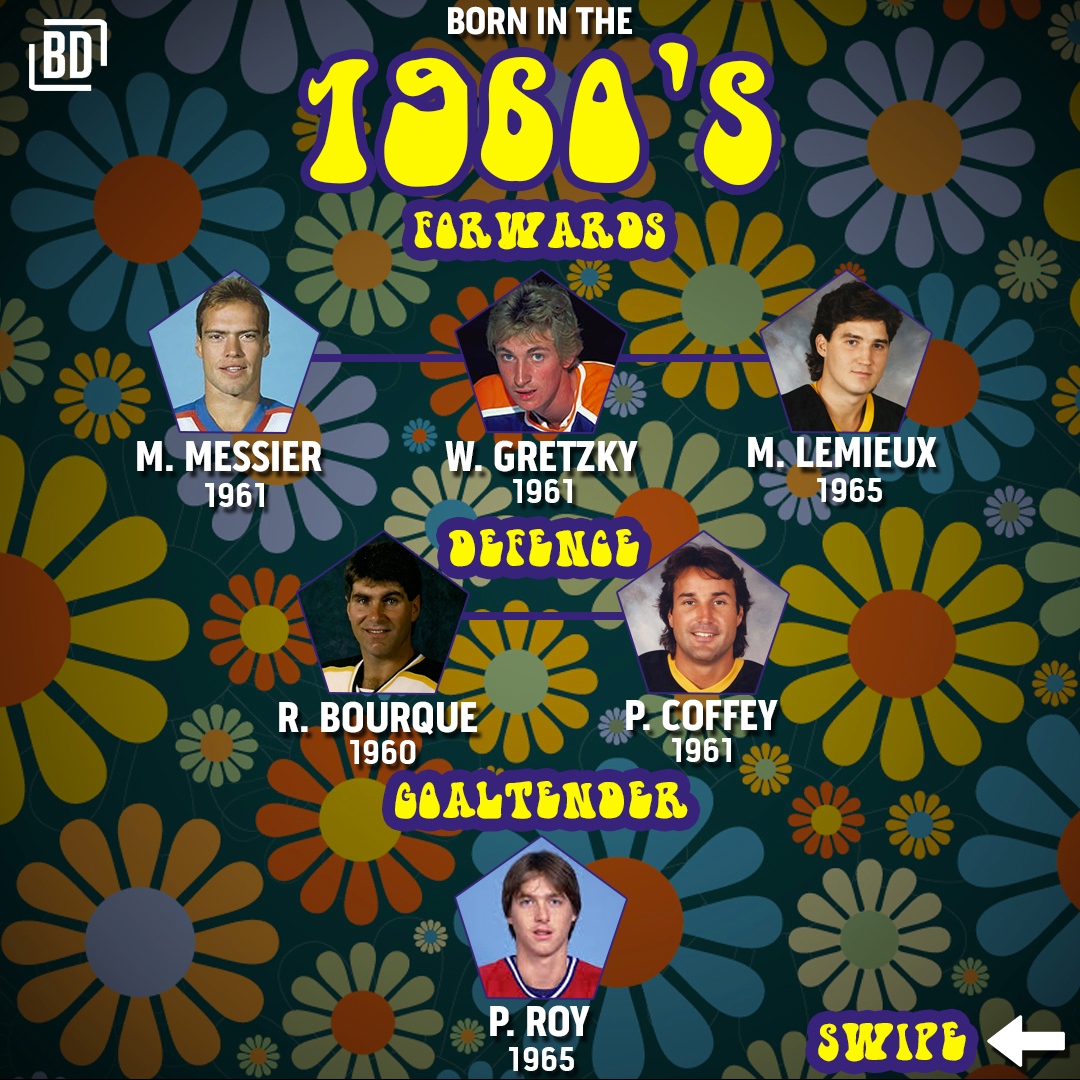
The 1960’s takes the cake for producing the greatest talent in NHL history.
Gretzky, Lemieux and Messier were offensive horses, combining for an absurd 6,467 points throughout their careers. When you throw arguably the two greatest offensive defencemen of all time in Ray Bourque and Paul Coffey in the mix, you’ve got yourself a terrifying unit. Both D-men managed to reach at least 1,530 points by retirement. The five together are quite simply the crème de la crème.
It’s not like there were any shortage of options for the crease either. Dominik Hasek was brilliant during his NHL career, but Roy narrowly gets the edge after capturing four Stanley Cups between the Canadiens and Colorado Avalanche. An argument can certainly be made for the Dominator, though.
1970's
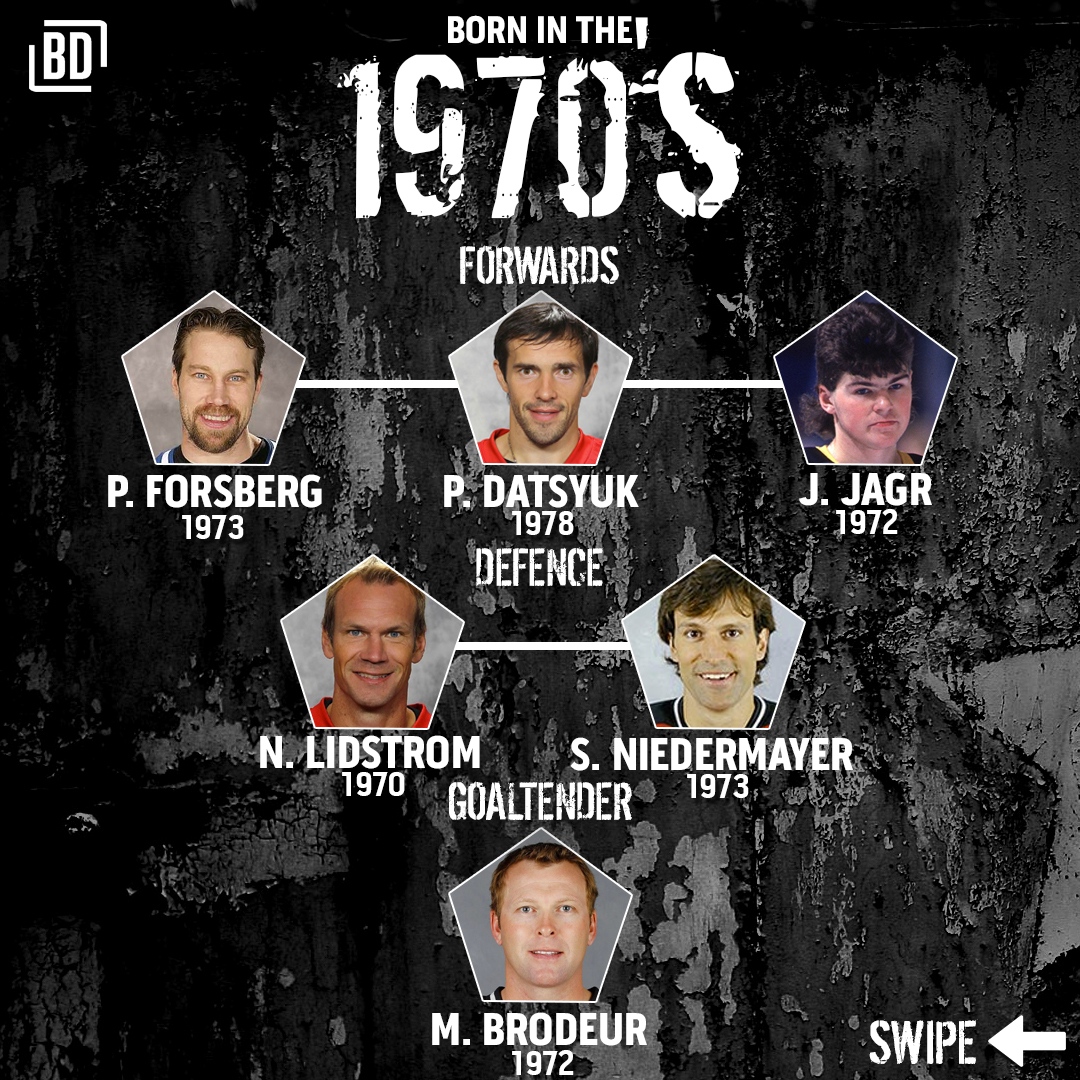
A great deal of European talent was produced in the 70’s that went on to become heroes for many millennials. Datsyuk and Forsberg individually brought unique skill-sets to the league, whereas Jagr consistently posted strong numbers for 23 seasons. Not to mention the Czech possessed one of the greatest heads of hair in NHL history.
Former New Jersey Devils defenceman Scott Niedermayer was an intelligent, smooth force on the backend, however it is Lidstrom who will be remembered as the most dominant D of his time. The former 53rd overall pick won four Stanley Cups with the Detroit Red Wings, was a 10-time NHL First All-Star Team member and was awarded the Norris Trophy seven times; an absurd number in the salary cap era.
...Jaw-dropping.
Behind them, you’ll find Niedermayer’s former teammate Martin Brodeur. Marty sits alone at the top of the NHL’s all-time shutouts (125) and wins (691) lists. Neither of those appear to be getting broken anytime soon, as Luongo is the closest active goaltender in both categories with 73 and 453 respectively.
1980's
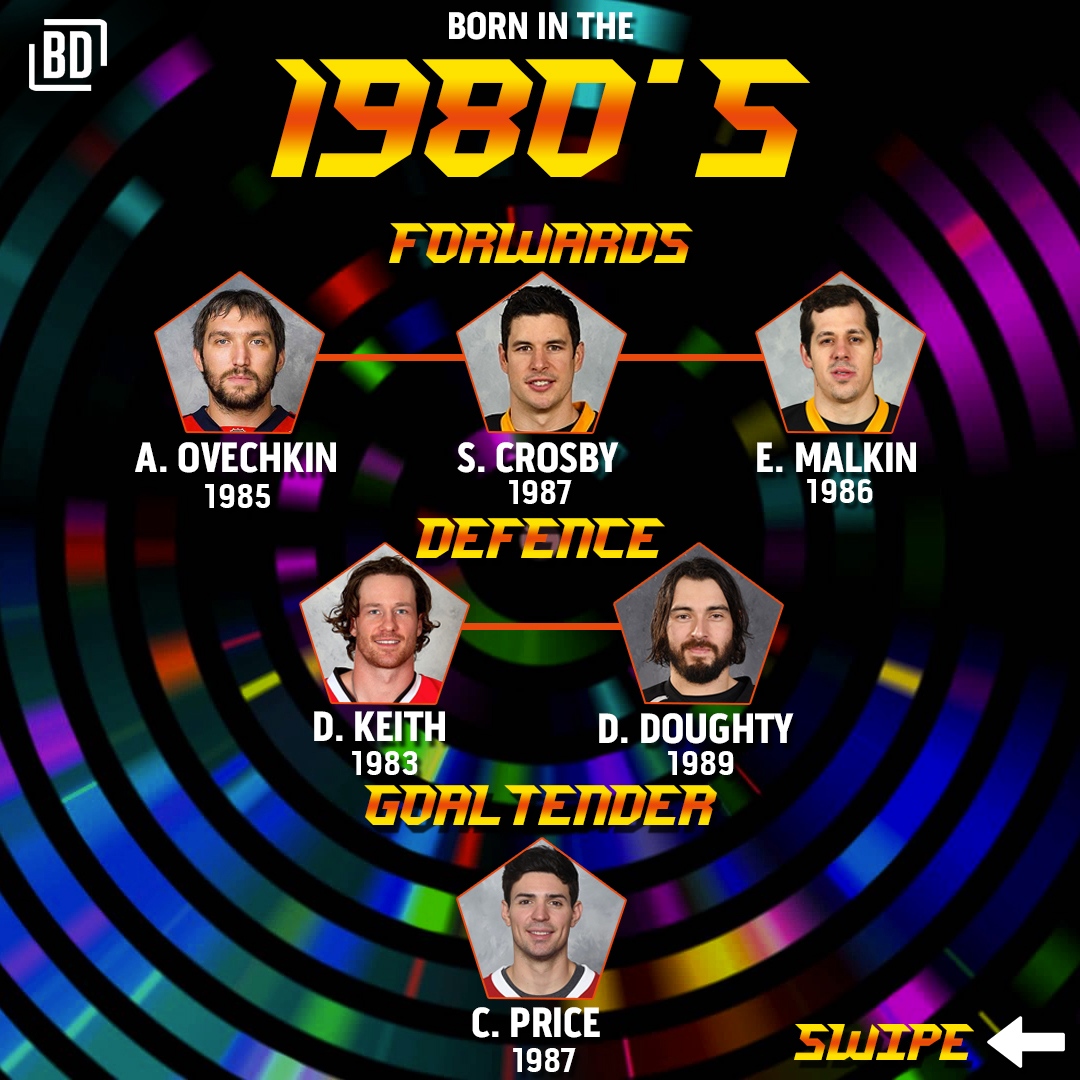
Let’s cut to the chase and skip the Crosby discussion, because there’s no reason to even argue his place on the line. The other two spots, on the other hand, are a little more up in the air.
It’s tough to argue against Ovechkin, as his goal-scoring rate has been ridiculous throughout his career. No Stanley Cups, but seven 50-goal seasons (with 24 during the 2012-13 shortened campaign) in 12 seasons is nothing to sneeze at. He has been as electrifying of a player his generation has seen, and therefore gets to represent the 80’s.
After winning his third Stanley Cup, Malkin barely edges out Kane for the final placement. The 6’3 giant has been brilliant when healthy, and owns a higher point/game average than the Blackhawks forward (1.178 >1.016). Points aren’t everything, but Malkin is more dominant when he’s playing his best hockey.
Price gets the call in net, although other tendies deserve consideration. Henrik Lundqvist is a five-time Vezina Trophy nominee and similar to Price, has an Olympic Gold Medal to his name. An argument can easily be made for either one, but Carey’s Hart Trophy gives him the edge. Jonathan Quick also deserves credit, as he was a prime member of both of the Los Angels Kings’ Stanley Cups in 2012 and 2014.
1990's
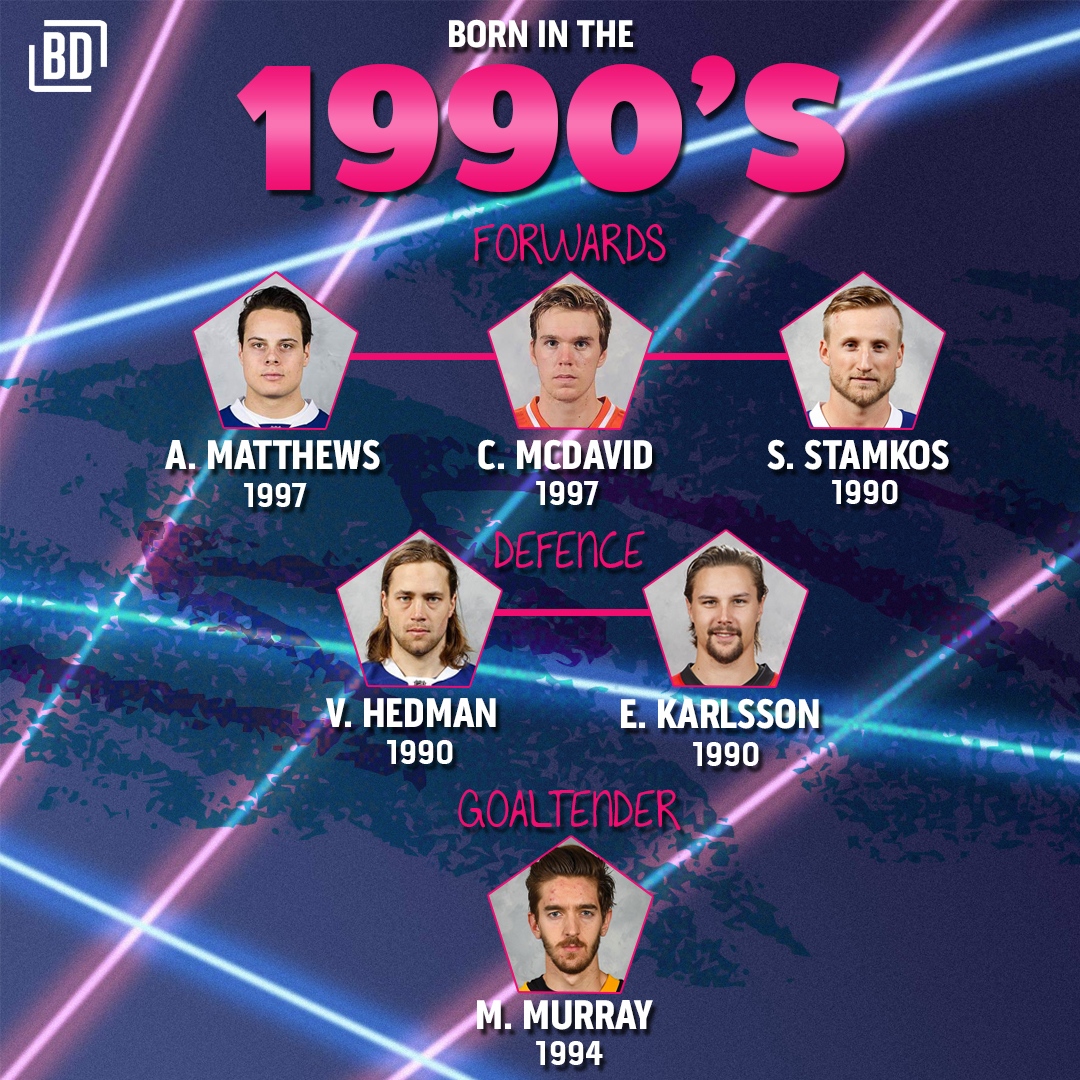
Here’s where things get real interesting.
McDavid is already a legend and there is no argument for his place on the 90’s line. But there is reason to argue against the other two selected players.
A 60-goal scorer, Stamkos has appeared in a Stanley Cup Final and is arguably the game’s current goal-scoring king. To leave him off of the list just wouldn’t be right. The question then becomes: who grabs the final forward spot? John Tavares has had a great career so far with the New York Islanders, while Valdimir Tarasenko lit the lamp over the past three seasons. However, Matthews gets the call after an incredible rookie campaign. Sure, an argument can be made that his sample size is too small and that he hasn’t proved enough. But 40 goals as a rookie is simply mind-blowing, and in a couple of seasons this choice will likely no longer be in question.
Two Swedes anchor the line, as Karlsson and Hedman have both been unstoppable in recent years. To cap things off, Murray earns the starting job in the blue paint. Two Cups by age 23 is flat out unheard of.
That’s our long list of the best starting lines from players born in each decade. Let us know which one you think is the best @BarDown!



